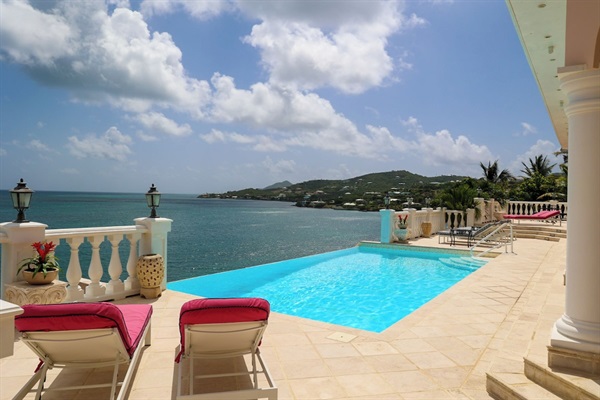Cost Efficiency: Delving into the World of Fractional Ownership
In the property landscape, fractional ownership has been a hot topic. It offers people the chance to own a share of an asset, be it a second home, a private jet, or a luxury yacht, making things that were once only reserved for the rich, more attainable. But is it cost-efficient? Let's delve into the cost efficiency of fractional ownership and evaluate whether it truly is a cheap option for owning a second home or any other high-cost item.
Introduction
Welcome to the world of fractional ownership, a novel and enticing route towards owning assets previously dismissed as unattainable. Fractional ownership offers individuals the opportunity to own a portion of an asset - a tropical vacation home, an ultra-modern private jet, or even an elegant yacht. There's no denying the appeal. But when we peel back the glitz and glamour, does the concept of fractional ownership hold up on the standard of cost efficiency?
First things first—let's clarify what we're dealing with. Fractional ownership is a method of property ownership where multiple parties invest in and hold a shared ownership stake in an asset. These properties or assets can span the gamut from luxurious second homes and high-end vehicles to extravagant vacation properties and boats. The cost and responsibilities of maintaining and operating the asset are shared among owners, underscoring the fractional in fractional ownership.
When it comes to the question of cost efficiency—think of it as a measure of how economically resources such as funds are used to achieve an outcome or result—you might be curious if fractional ownership truly is a wallet-friendly alternative to whole ownership. It's a valid question, especially given that the primary allure of this model is its promise of luxury and exclusivity at a reduced price tag. Well, stick around as we explore and evaluate the cost efficiency of fractional ownership ranging from up-front cost comparisons to a deep dive into the nitty-gritty of maintenance expenses, and more. Whether you're a seasoned investor or just a curious novice, let's together unearth the realities of this modern approach to ownership.
Understanding Fractional Ownership: A New Path to Ownership
As part of the larger collaborative economy wave, fractional ownership is an innovative concept emerging within the property and luxury asset marketplace. Essentially, it's a shared ownership strategy where several individuals come together to purchase and own a fraction of a high-valued asset, such as a vacation home, yacht, luxury car or even a private jet. This ownership model allows the cost of acquisition, maintenance, and other expenses to be divided among the co-owners, making it a more financially manageable endeavor. At its core, fractional ownership is akin to splitting a pricey pie into manageable slices. Each co-owner purchases a slice, or 'share', typically entailing certain usage rights, responsibilities and benefits. These shares often correlate with time; for example, twelve co-owners of a vacation home each owns the property for one month of the year.
What types of assets typify fractional ownership? While the concept can technically be applied to any asset, it tends to be prevalent in markets where the complete ownership might be financially inaccessible or impractical for most. Real estate, specifically, second homes or vacation properties in desirable locations, often come under this model, allowing for more people to invest in potentially lucrative markets, such as beachfront properties or city center apartments.
Additionally, luxury assets like private jets, yachts, or high-end cars are also common candidates for fractional ownership. It breaks down the barrier—which was previously high—in owning these dream toys and ultimately, helps more people live out their fantasies in a financially responsible manner. Hence, fractional ownership serves as a creative path to ownership, where the individually prohibitive cost of an asset becomes collectively achievable. Importantly, it’s a path that has not only democratized access to luxury and property markets but also launched a fresh way of thinking about ownership and investment.
Weighing Up the Costs: Is Fractional Ownership Cost-Efficient?
Before we delve into the financial analysis, it's important to remember that 'cost efficiency' is a two-pronged concept. It's not just about the upfront sticker price—it's also about the ongoing expenses, your usage of the asset, and the eventual return on investment.
Now, let's talk numbers. The beauty of fractional ownership is that it doesn’t require you to reach deep into your pockets to cough up the total cost of a luxury asset. Since you're sharing the cost with other owners, the purchase price is significantly smaller. Simple math, right? For instance, owning a quarter-share of a $2 million sea-facing villa costs you just $500,000 upfront—a sum much easier to digest.
But that's not where the cost-saving ends. Fractional ownership also generously slices through your maintenance costs. Whether it’s annual property taxes, repair costs, insurance premiums, or routine maintenance, the financial burden is divided, making those daunting expenses more manageable.
While these numbers are enough to have you leaping for your check books, it’s crucial to put things in perspective by looking at the flip side too. Unlike whole ownership, with fractional ownership, you don't have free reign over your asset. You'll have limited usage, determined by the number of shares you own. And should you decide to sell, you might find that selling a fraction of a property is a little more complicated than selling a property outright. Comparing this with the costs of whole ownership, where you bear the entire purchase price and all the recurring costs by yourself, fractional ownership might seem like the clear winner. But remember, you get unrestricted access and complete control over the asset with whole ownership. It's a classic case of "you get what you pay for"—which, in this case, is either a chunk of something or the whole pie.
Ultimately, the cost-efficiency of fractional ownership is not a one-size-fits-all answer—it greatly depends on how much you actually use the asset and how much value you derive from it. While fractional ownership does decrease costs, more frequent users might find better value with whole ownership and the unrestricted access that brings.
The Allure of Shared Second Homes: Do They Come Cheap?
Dipping your toes into the realm of second home ownership can often seem daunting and expensive, especially with the conventional full-ownership model. However, fractional ownership has opened up new possibilities for many individuals seeking a getaway property but aren't prepared to shoulder the hefty costs entirely.
Imagine this - you and a group of like-minded investors come together and purchase a beautiful lakeside villa that you all can use throughout the year. This is the basic principle of shared second homes; the idea of splitting ownership, along with its costs and responsibilities. Typically, the underlying allure of shared second homes is the prospect of dipping into luxury at a more affordable price. But how cost-efficient is it, really? As always, it's a matter of perspective.
On paper, the initial purchase price of a shared second home, thanks to its division among multiple owners, is considerably lower than outright ownership. Consider a luxury villa that costs $1 million. With fractional ownership of, let's say ten shares, the initial outlay for each owner would be reduced to $100,000 - seemingly a much more affordable proposition.
Yet, while the sticker price may seem appealing, one cannot ignore the additional costs. Maintenance fees, insurance, and potential property management services - these expenses, though shared, can accumulate quite significantly over time. That said, these costs could still be considerably lower than their counterpart scenario, where one is the lone owner of a $1 million home.
Another factor to consider with shared second homes is the scheduling. More owners may mean more scheduling conflicts. However, well-managed fractional ownerships usually have a defined usage schedule, ensuring every owner gets their fair share of time in their holiday paradise.
In sum, while owning a shared second home is not exactly 'cheap,' it can be considerably more cost-efficient when compared to full ownership, depending on your individual circumstances and usage plans. Remember, the potential upsides—both financial and experiential—need to be carefully weighed against the ongoing costs and commitments, before diving into the fractional ownership of a second home.
Factors Influencing Cost Efficiencies of Fractional Ownership
Diving deeper into the cost-efficiency equation of fractional ownership, it becomes evident that several factors ride shotgun in determining whether this mode of ownership proves to be a boon or a bust for your finances. Among these factors, market demand, geographic location, and the quality or type of property are predominantly prominent.
Firstly, let's talk about the elephant in the room - market demand. The cost efficiency of fractional ownership is intertwined with the element of demand and supply. Like any other property investment scenario, if the demand for a particular asset increases, its price soars. It's basic economics, folks. Therefore, fractional ownership becomes more cost-effective when the prospect or associated assets are in high demand, ensuring a clear appreciation in value over time.
The geography or location of the fractional property is another hard-hitting factor. For instance,an ownership stake in an upscale property situated in a hotspot like New York City, Ibiza, or some exotic island in the Maldives will undoubtedly have a different cost structure compared to a fractional ownership in a lesser-known location. It's the age-old mantra in the real estate world: Location, Location, Location!
Finally, the quality or type of property you're investing in matters. Are you looking to get your piece of the pie in a private jet or a fancy ski lodge? Or maybe you're leaning towards a modest timeshare vacation home? The maintenance costs, management fees, and overall investment required will differ drastically. It's a simple case of ‘more luxury equals more moolah’.
Such factors don't stand alone; they play along in an intertwined ballet, influencing the cost-efficiency of your fractional ownership. Thus, while fractional ownership can be a more affordable route, it's crucial to remember that these aspects carry significant weight in deciding if this venture will be worthwhile and cost-efficient in the long run. It's not all black and white; there are plenty shades of grey to be mindful of in the colorful world of fractional ownership.
Conclusion
Summing up the above exploration, the cost efficiency of fractional ownership is deeply dependent on a multitude of factors. From the type of property or asset, its location and quality to market demand - the cost efficiency of fractional ownership is not a universal truth but a largely personalized experience.
For some, the allure of a shared second home or luxury asset for a fraction of the traditional entire ownership cost can indeed prove cost-efficient. On the other hand, the inclusion of additional factors such as maintenance costs, management fees, and time restrictions can tilt the scales towards inefficiency.
Knowing this, it is crucial for potential buyers to engage in their own thorough research and careful analysis. Take into consideration all the aspects we touched upon. Remember, this isn't just a transaction; it's an investment.
Perhaps most importantly, prospective fractional owners must assess their financial situation and personal lifestyle needs. This assessment can serve to guide them on their journey towards determining whether the fractional ownership path indeed presents an appealing and cost-efficient gateway to luxury, or it turns out to be a hidden cost trap.
In conclusion, fractional ownership could be the cost-efficient answer to luxury ownership for some. Still, it's not a one-size-fits-all solution. So tread thoughtfully, and let your unique circumstances be your guide in this promising yet labyrinthine landscape.
Keep reading




.png)
